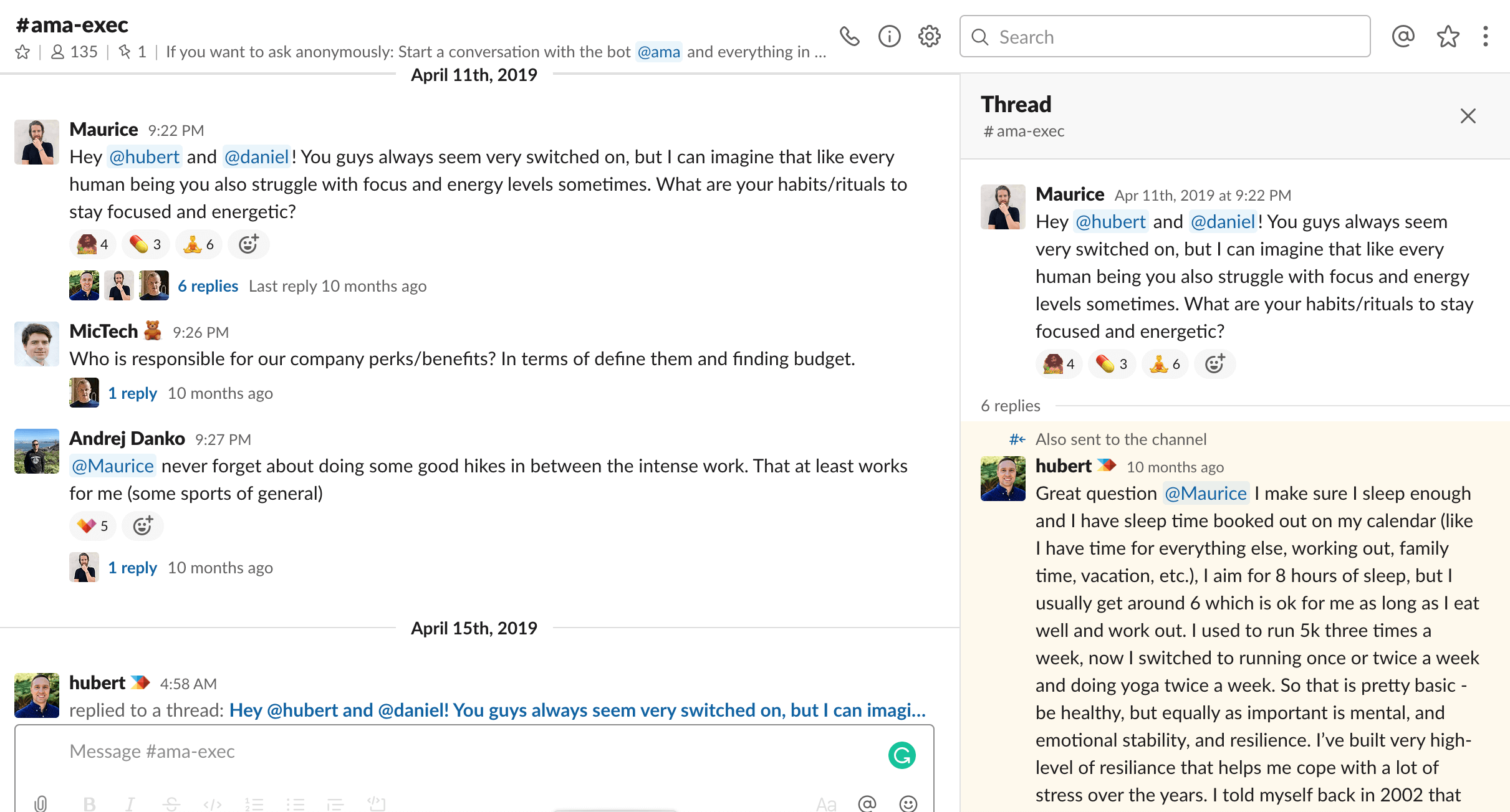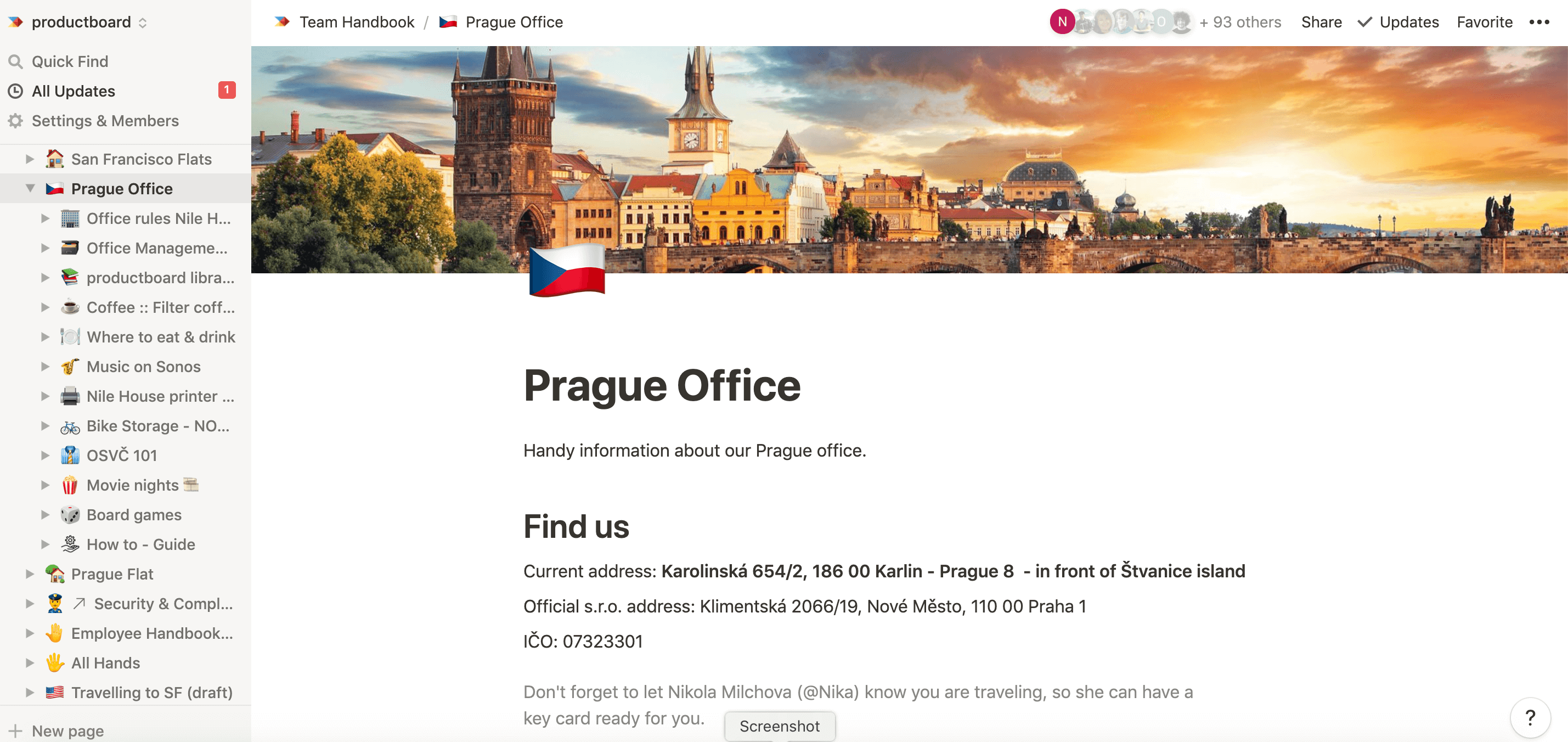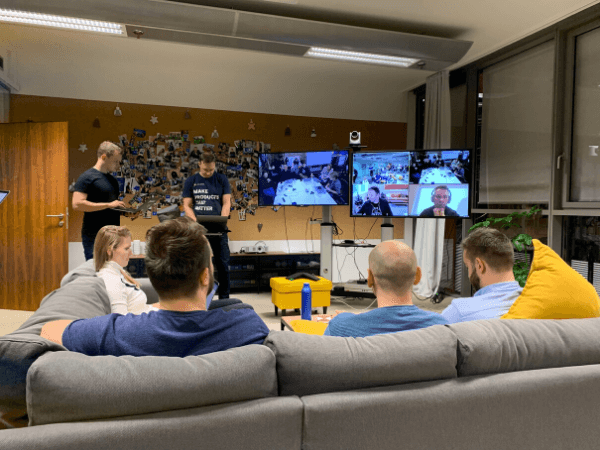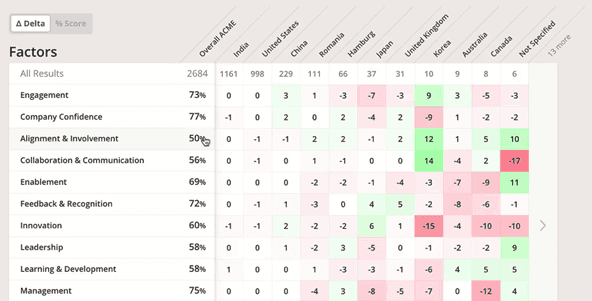Transparency at productboard: 5 ways we walk the walk

I’ve worked in companies that talked a lot about transparency but did not stay true to their word when push came to shove. In that sense, you can file transparency alongside promises of engagement, diversity, and inclusion.
In these companies, key information was hoarded by a handful of people. Big decisions about the company’s direction happened behind closed doors. Key members of staff would disappear from one day to the next, with no explanation as to why.
Most employees were kept in the dark, unable to see where the company was heading, how it was going to get there, and why.
Thankfully, at productboard, we’ve made a commitment to do the opposite. Transparency is built into the way we work. I have access to information about the company’s processes and performance. And I’m included in conversations about its strategy and direction. Everyone is.
Here’s how we do it.
1. Using Slack to democratize access to information
We intentionally leverage Slack to improve transparency and democratize access to information. Unlike email, Slack communication is built around public channels, which are organized around specific topics. At productboard, anyone can join any channel and follow what’s happening there.
We’ve set up various Slack channels designed to improve transparency, including:
#ama-exec
Our ama-exec Slack channel provides a space for employees to ask any productboard-related questions. Here you’ll find questions about benefits, company strategy, processes, corporate social responsibility – anything really.
By using the ama app extension on Slack, employees can choose to submit inquiries anonymously. This encourages people who are more reserved — or worried about stirring the pot with controversial questions — to participate.
Any question posed in this channel is addressed by the productboard leadership team directly — a great way to maintain an open line of communication between employees and those in charge of key decision-making.

#oxygen-revenue
This channel provides real-time updates on our financials and total number of customers, as well as details about new customers coming on board. This allows everyone to see how productboard is performing as a business, and to celebrate big wins together as a team.
#talk-mental-health
As a company that deeply cares about our employees, we aim to break the stigma around mental health and offer support when needed. Enter #talk-mental-health, a channel where we talk openly about mental health-related issues, seek and offer support, and share resources — either personally or anonymously.
Our culture of open, honest communication isn’t limited to work-related issues. We spend a large chunk of our time in the office and with colleagues, and it should not be a taboo for people struggling with mental health to find empathy and community at work.
2. Leveraging an internal, open-access wiki to open cross-functional collaboration
We use Notion as an internal wiki. It’s not owned by any single person, team, or department; anyone can add new content or update existing pages. It’s the perfect place to record ideas, formalize processes, and share the strategies and work of cross-functional teams – all in one place.

Using Notion means company-related information isn’t siloed in teams or departments. Instead, everyone can view everything. This really helps everyone get a grasp of how things work across the company, reducing the need to request information from others.
For example, in the last week, I’ve used Notion to read best practice tips for using Slack, to learn how to brew coffee using one of the fancy machines in our Prague office, to find out how taxes work for contractors in the Czech Republic, and to better understand our Product Excellence methodology. Oh, and I contributed a guide on how to write and publish blog articles as well.
We also archive recordings of meetings in Notion, allowing anyone to go back and see what was discussed in an all-hands meeting or product call, for example. Our design team even posts links to their weekly sessions with design advisor Joshua Goldenberg, so anyone can tap into his expertise.
3. Holding regular all-hands meetings
Twice a month, the entire company – that’s our offices in Prague, San Francisco, Vancouver, and anyone dialing in remotely – meets for an all-hands meeting.
This is a chance for different departments to update us on their news and progress. The Sales team shares their latest figures, the Marketing team gives us insights into the success and reach of their programs, the People Ops team update us on recruitment, and so on.
All-hands is a great opportunity to hear information from the very top. Just a few weeks ago, for example, our CEO, Hubert, shared insights from the latest board meeting. We even plan to have an all-hands session with productboard’s board members and investors to hear their vision and advice.

4. Keeping everyone updated on where our product is headed and why
Product touches every part of the organization and ultimately determines success, so everybody in the organization should be aware of where the product is headed and why. Yet, it’s surprising how so few tech companies proactively share product-related progress and updates.
Luckily, this is not the case at productboard. Once a week, we have an hour-long product call where our product teams present new features and updates. This is also a chance to ask any product-related questions you might have.
These meetings are open to anyone who wants to join, providing amazing visibility into the development of the product.
5. Encouraging honest discussion about employee happiness in the workplace
At productboard, we work hard to build and maintain a culture where everyone feels happy and engaged.
We use Culture Amp to collect employee feedback and measure satisfaction levels. This helps us to understand how people feel about different areas of our culture, including strategy, peer relationships, reward, recognition, workload, environment, and more.
We share the results of these surveys with everyone during all-hands meetings or at our annual international offsite retreats. All feedback is anonymized, but presenting the aggregated data really helps everyone across the company understand which aspects of our culture are working and which need more thought.
Of course, this makes the company accountable to act on the results – otherwise, what’s the point?

Transparency: the benefits are clear
These platforms and processes are how we put transparency into action. But really, transparency is a cultural issue. It’s a mindset. And ultimately, it all boils down to trust and respect.
Transparency has clear benefits, too. It’s not just about the practical advantages of having access to information, it’s the sense of inclusion and togetherness that comes with it. By being involved in conversations that go beyond the scope of our own work, we get to see the bigger picture and how we contribute to it.
. . .
Want to work for a growing, global company that takes its values seriously? We’re currently hiring across the board. Check out our careers page for more details.







